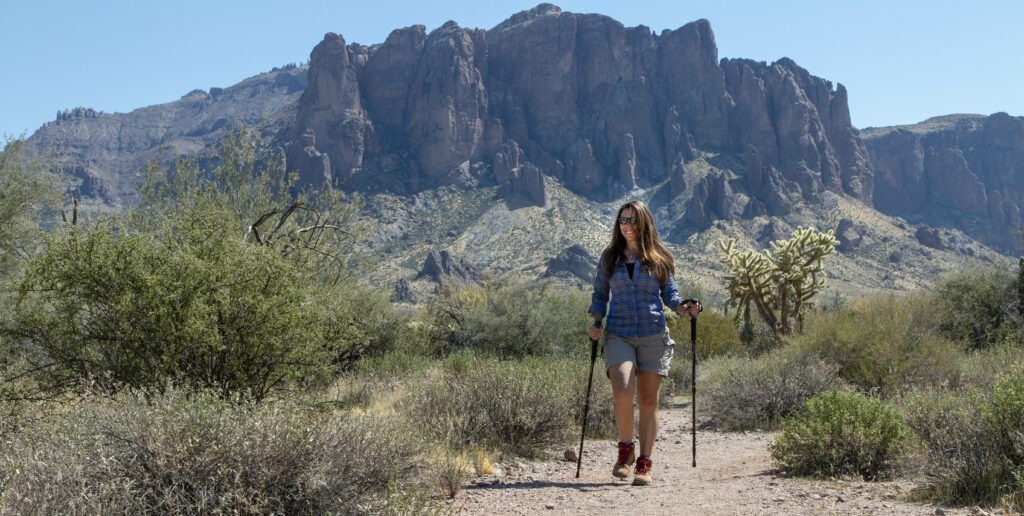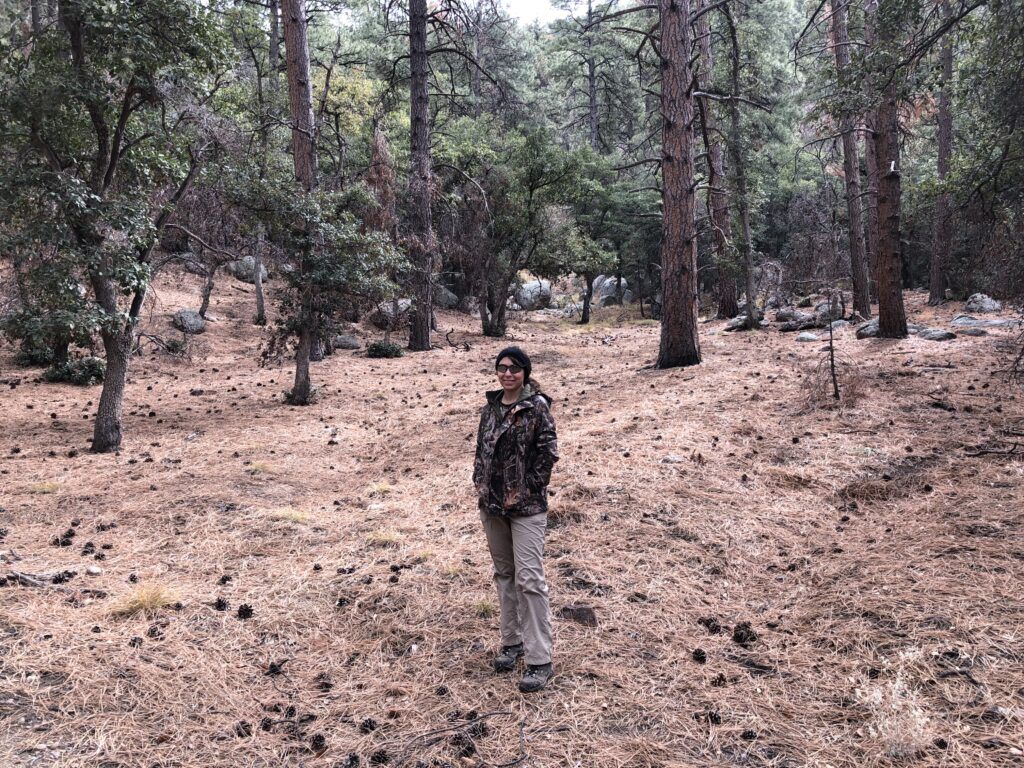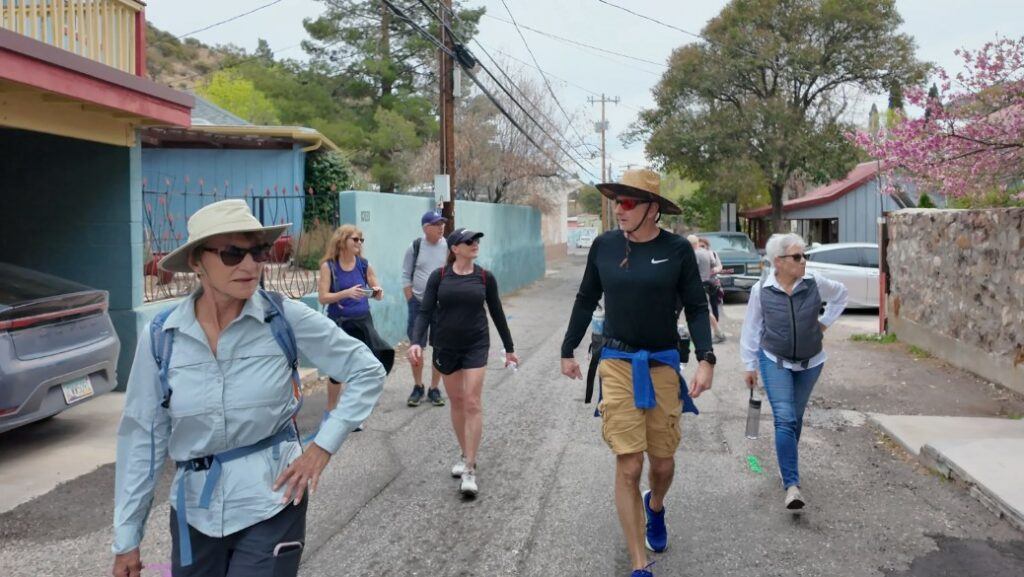
The key to a great hike is preparation. It’s important to have the proper gear to meet the unexpected scenarios nature might throw at you. From changing weather to tricky terrains, the essential hiking gear for beginners is necessary to make the hiking experience far more enjoyable and comfortable.
Consider this the first step on your many trails ahead: understanding and gathering the fundamental hiking gear. It’s important to realize that each item plays a role in your safety, comfort, and overall trekking pleasure. I remember when I was first putting my hiking ensemble together- I had a blast!
If you’re just starting out with your hiking adventures, be sure to read our Hiking for Beginners article before stepping out on the trails.
This should be a fun process for you- and not stressful. These items will provide you with a great start to research all the wonderful products on the market today!
So, let’s ready our packs with the basics, moving on to what every hiker needs to start their journey.
{Some of the links in this guide go to my trusted affiliates. You pay nothing extra, and PeakFitnessOutdoors.com may make a small commission. Thank you so much for supporting this website and helping to inspire others to be healthy outdoors!}
The Basics: What Every Hiker Needs to Start
- Hiking BackPack
- Clothing
- Footwear
- Food & Water
- Sun Protection
- Navigation
- Emergency & First Aid
- Tools
- Extras
Hiking BackPack
A quality hiking backpack is the primary piece of gear you’ll need for a day hike. For those all day hikes, you should opt for a 10-20 liter daypack to hold water, snacks, extra clothing, first aid kit and more.
Select a quality backpack that puts less strain on your back while offering plenty of space can make all the difference in your overall experience. Learn more How to Choose a Backpack.
Clothing
Next up, layered clothing. The weather can change on a dime, especially in the mountains or woods. I suggest moisture-wicking fabrics for your base layers, insulation like fleece for warmth, and a waterproof shell to stay dry. This isn’t just about comfort or fashion; it’s also about safety since proper clothing can prevent hypothermia or heat exhaustion.
Footwear
Your journey starts at your feet with comfortable, supportive footwear. It’s the most critical part of your hiking attire! Sturdy boots or trail shoes designed for the terrain will be your best friends on the rocky paths or muddy tracks. Blisters and sore soles aren’t just a discomfort; they can ruin your hike. So invest in the best boots you can, and break them in before the big day. Learn more on finding the perfect pair of boots – How to Choose Hiking Boots
Food & Water
Dehydration can sneak up on you, and it’s a danger that’s easy to underestimate. Packing reusable water bottles or hydration pack will keep your water handy and reduce waste. You need to plan on packing 1 liter of water per hour. So- a four hour hike, you need at least 4 liters.
How much you pack for food/snacks will depend on the amount of time you’re on the trail. You need to fuel your body with the right food and drinks to keep you energized and hydrated throughout your journey. Calories are necessary to fuel your brain and muscles so you maintain your energy to complete your hike.
Start with eating breakfast at home or along the way. Eat complex carbs with protein and fat. An example is whole grain bread/bagel (complex carbohydrate) with almond butter or cream cheese (fat and protein) or top the bread with an egg (protein) and include fruit (simple carbohydrates). Drink with milk (protein).
For snack ideas, take along high energy protein bars, nuts, dried fruit, and jerky. Choose snacks that won’t melt or spoil easily. Trail mix is a good option to bring for a variety of healthy fats, carbohydrates, and proteins. I love the trail mix with chocolate, but if it’s too hot then you’ll end up with a big goopy cluster.
Navigation
If you’re on a short, highly trafficked trail, then you won’t need an extensive navigation system. It’s when you get more remote and less familiar with the trails, that you need to be concerned with navigation.
Having a map and compass can be lifesavers. They’re lightweight, don’t rely on batteries, and, with a bit of know-how, they’ll never steer you wrong. Sure, a GPS device can be helpful, but it shouldn’t replace these devices. Get familiar with reading maps and using a compass — it’s a skill that can make all the difference. Learn more with REI- Navigation Classes
Sun Protection
Sun protection is integral to your comfort and safety. Sunburn can happen even on cloudy days, so load up on sunscreen, wear UV-blocking sunglasses, and don a hat. That shade will feel like a blessing when you’re out in the open.
Emergency & First Aid
First aid kit. You’re going to find bandages, antiseptic wipes, blister treatments, and tweezers for those pesky splinters (or cactus needles in my case). Your kit should adapt to your hike’s length and remoteness.
Flash light/Head Lamp– Imagine it’s getting late, and the trail is getting darker. This is where your headlamp or flashlight can become a life saver. Pack extra batteries, too. Because getting stuck without a light source can quickly go from inconvenient to unsafe.
Emergency shelter– Choose something compact like a space blanket, bivy sack, or a light tarp. This gear might just be a lifesaver if you’re stranded due to injury or a sudden weather change.
Fire– A fire-starting kit isn’t just for those spectacular Instagram sunset shots. It’s vital for warmth and may be necessary for cooking if you’re out longer than planned. Pack waterproof matches, a lighter, and some tinder.
Tools
A multipurpose tool combines a knife with other useful gadgets like files, pliers, and scissors. This tool will help in cases of cutting a piece of rope, repairing gear, or preparing a snack. They can come with many different features, but here are the most important to have:
- Sharp Blade for cutting and slicing
- Serrated blade for sawing wood or fabric
- Pliers for hot handles, containers
- Ruler for measuring the distance on a map
- Can opener
Extras
Trash bags and eco-friendly products assist with adhering to Leave No Trace principles.
Personal items to boost your enjoyment. Whether it’s a camera to capture the views, a journal to jot down thoughts, or binoculars to watch distant wildlife,
Hygiene items like rapid dissolve toilet paper, womens urinary devices (some of my lady friends swear by these), and baby wipes will keep you feeling your best on the trail!
Summary- Essential Hiking Gear for Beginners
So, let’s take a quick look once more at the gear you need for your hiking adventures. A backpack large enough to hold all your food, water and gear. Clothing that you can layer- remove and add as necessary. Quality hiking boots or shoes that are a great fit help with stability and balance on the trail. Food/Water to provide the proper hydration and nutrition to sustain your energy.
A hat, sunglasses, and sunscreen protect against harmful rays and help to maintain body temperature. Navigation ensures that you won’t get lost and emergency/first aid equipment is there if and when you need it. These items can make a difference between life and death. A multipurpose knife comes handy in a variety of situations and those extras to make your hike even more special!
Are there other items you like to take along on your hiking journeys? Would love to hear your thoughts. Please leave a comment below!


